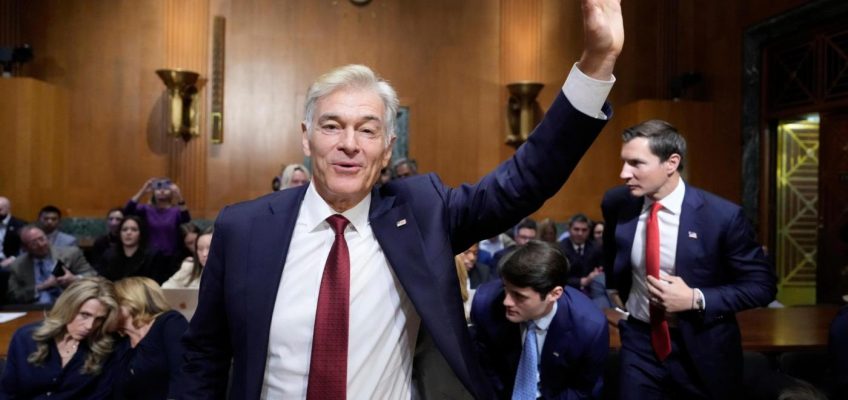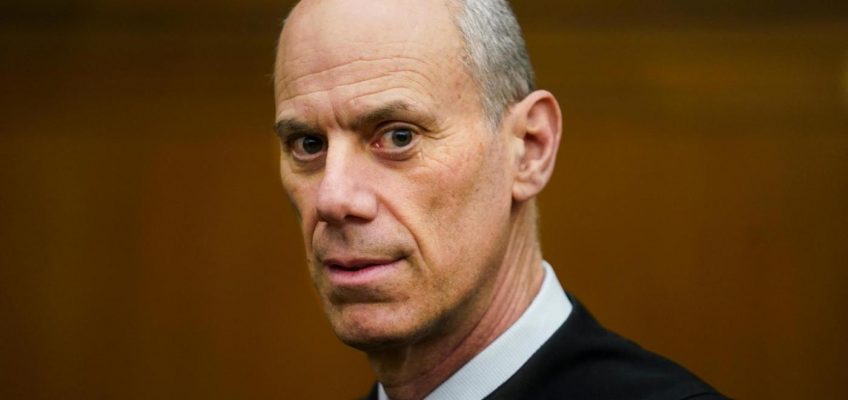Some of the fiercest blowback in recent years against “diversity, equity and inclusion” greeted Stanford University in 2022 when it launched the website of its Elimination of Harmful Language initiative. Back then, it was the right that was appalled by the efforts to limit language.
Developed by campus experts in technology and inclusion, the site labeled hundreds of words and phrases “harmful,” urging the use of alternatives. While the list included some terms widely considered offensive (such as “cripple” for disabled or “shemale” for transgender) it also cited a baffling array of anodyne terms — “immigrant,” “grandfather,” “Hispanic” and scores of others. The word “American” was cast out in favor of “U.S. citizen,” lest the former be construed to overlook the existence of the rest of the Americas. “Tribe” was rejected as “equating indigenous people with savages.” While the list was not official university policy, the message was clear: To be an upstanding Stanford citizen, these lines ought not be crossed.
The Wall Street Journal editorial board excoriated the list as self-parody, saying “you used to have to get a graduate degree in the humanities to write something that stupid.” Conservative websites and podcasters had a field day, calling the site “Orwellian.” Stanford Professor Jay Bhattacharya, now President Donald Trump’s head of the National Institutes of Health, called the list “ham handed” and “crazy.” Amid the uproar, Stanford sheepishly pulled down the website, citing the university’s commitment to academic freedom.
Now the left is making a lot of the same critiques, noting that this time the dystopian directive comes from the top of the federal government. As part of its crusade to wrest America from the clutches of “wokeness,” the Trump administration is discouraging federal agencies, grantees and contractors from using a long list of ordinary words like “accessible,” “female,” “women,” “political” and “pollution.” These words have been scrubbed from government policy statements and websites; government affiliates are effectively on notice that their use could result in discipline or punishment.
Some of the words on the Stanford and Trump lists overlap, including variations of “Hispanic,” “victim,” “pronouns” and “transexual,” a vivid illustration of where the extremes of right and left tilt so far as to appear to converge. After ridiculing Stanford’s censorious overreach, a right-wing movement supposedly bent on freeing Americans from intrusive controls on speech is indulging in precisely the methods it excoriated.
Trump has made the war on woke a centerpiece of his early weeks in office. He has banned diversity, equity and inclusion policies, eliminated transgender protections, and targeted universities, law firms and government bodies accused of resisting such efforts. The MAGA movement’s disdain for DEI is grounded partly in concerns over sidelining of merit in favor of diversity, and on what it sees as the unfairness of using race or gender to advantage some at the expense of others.
But a second major critique of DEI focuses on the heavy-handed policing of ideas. While the Stanford list was particularly egregious, it is not the only such policy to exert pressure on open discourse. Some see the very adoption of institutional commitments to diversity, equity and inclusion as the imposition of a singular ideology in settings like the university that should be open to all perspectives, including critics of such policies. Arguments over the legitimacy of affirmative action, transgender participation in sports or immigration policy can be stifled when people fear being accused of racism or bigotry for voicing dissenting views.
Overreaching diversity strategies can not only suppress speech, but also compel it. When some universities began to require faculty job applicants to submit personal statements outlining how they support diversity, equity and inclusion, the policies were rightly criticized as signaling to candidates that there was only one right answer when it came to DEI: full-throated embrace.
That the ridiculed Stanford list of harmful words has now been met by an opposing list of disfavored terms reflects the MAGA movement’s conviction that the fire in the belly of diversity advocates can only be fought with more fire. Opponents are convinced that the dangerous entrenchment of DEI in educational institutions, media companies and workplaces must be stopped by any means necessary. To match the implicit censoriousness of the Stanford list and similar approaches never enshrined into law, the Trump administration is resorting to out-and-out censorship.
While the Stanford list, by offering alternate formulations with similar meanings, aimed to declare off-limits specific words rather than entire concepts or ideas, the Trump list does the opposite. Its entries are proxies for whole areas of scholarship, research and policymaking that are now verboten. By instilling fear in government officials, educators and scientists, the Trump administration not only chills speech but also impairs essential work in areas including gender and racial differences in medicine, violence against women and mental health.
At a time when Vice President JD Vance is lecturing Europe about its supposed betrayal of free speech values, the Trump administration has made clear its unwillingness to live by the openness it expects from, say, the German political system. If free speech is a casualty of MAGA’s war to protect free speech, so be it, apparently.
Stanford’s list and other taboos did not succeed in stamping out bias. After strides toward diversity and inclusion on campuses and at corporations, now comes a ferocious counterattack. The retort is fueled in part by the belief that a past commitment to diversity threatened free speech. Now some are rushing to voice opinions that they felt were once muzzled.
Back in 2022, when Stanford professor Bhattacharya was interviewed on Fox News about the university’s harmful language list, he brought up one of the oft-cited risks of declaring words and ideas forbidden, saying: “I see a list of words like that and I want to say those words. I can’t be the only one.”
He is certainly not the only one. And nor is Stanford’s list the only one sure to provoke that reaction. The current chilling of discussions of racial and gender equality may ultimately only make support for such causes hotter.
Suzanne Nossel is a member of Facebook’s Oversight Board and the author of “Dare to Speak: Defending Free Speech for All.” She wrote this column for the Los Angeles Times.



